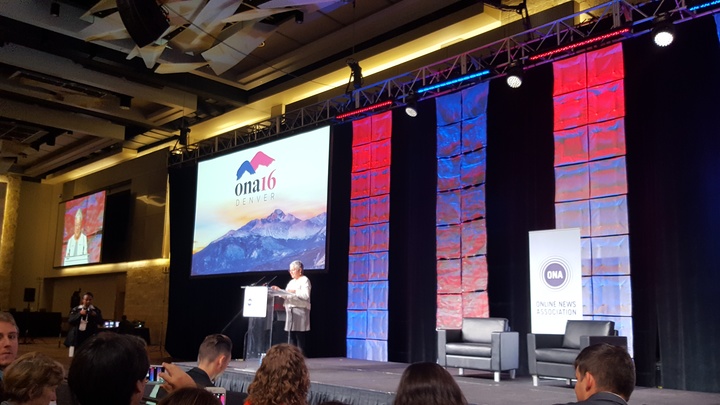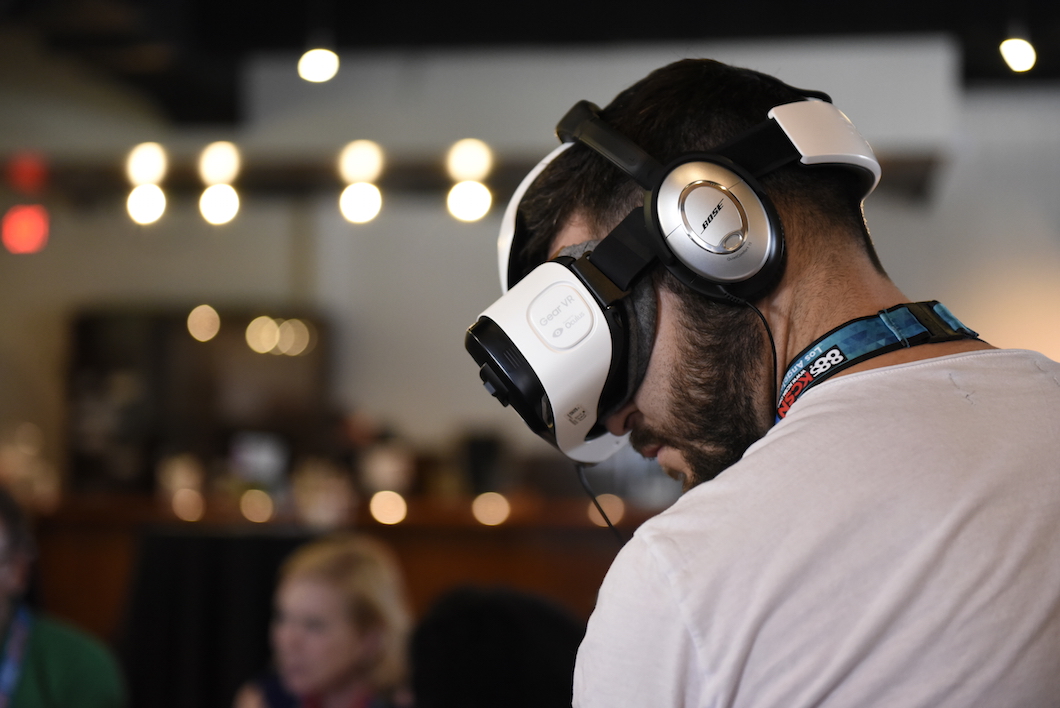
Tips, tools and themes from ONA16 to aid local journalism
Marian Liu helps lead the Online News Association South Florida chapter. She is the online entertainment editor at the Sun Sentinel based in Broward County.
I’ve attended 39 journalism conventions—from the Asian-American Journalists Association to American Society of News Editors to UNITY: Journalists for Diversity, but as a veteran convention-goer I consider the annual Online News Association Conference my favorite.
It’s not just because ONA throws great parties, but I believe its attendees are the friendliest and most fashionable. I also find that I learn the most and can bring the most applicable skills back to my newsroom and to my ONA Local chapter. With Knight’s support, the growing network of ONA Local chapters are helping to share the valuable knowledge from conventions like ONA16 with newsrooms everywhere. Here’s a short overview of some of the highlights from this year’s convention.
If you only have a short amount of time to catch up on the news from ONA, here is a video you can watch during lunch, “Trends from ONA16.”
ONA16 had five main themes: live-streaming, bots, virtual reality (VR), social media and diversity in newsrooms. They all have to deal with giving the reader a richer story.
On live-streaming, Facebook Director of Product Fidji Simo kicked off ONA16 with a keynote about the best practices on Facebook Live. Many are common sense rules for general videos. Do bring the viewer right into the action. Don’t just include talking heads. Simo said that Facebook Live is best for stories that are gritty, bringing viewers right into the moment. She also advises to plan for at least 10 minutes for Facebook Live; it takes viewers that long to plug in. In the future, Facebook may add a video tab and roll out the ability to schedule video. Finally, Simo gave a great example of an engaging Facebook Live story where The New York Times invited readers to help solve a mystery of slides strewn across a sidewalk. Here’s a worksheet on the How’s and Why’s of Live-streaming.
The second and third themes of bots and VR proved that the future is here. It’s not about automating stories, but having these bots facilitate storytelling. Here are some examples for election coverage: Bailiwick Campaign Finance, a database for campaign finance research from a team of journalists, developers and academics, and Illuminating 2016, a database by a team at Syracuse University of all the social media messages the presidential candidates are sending. And, here are links to a whole workshop on where to start with bots, 10 tech trends from futurist Amy Webb and VR tips University of Southern California journalism Professor Robert Hernandez. In the end, what’s important is not the method, but the content.
The fourth theme, social media, has been around, but it’s still confusing. CNN had a great example from the Olympics on how its social media team used the different platforms. NowThis Managing Editor Versha Sharma stressed the importance of customizing each story for each specific platform and meeting the audience where they are. Each platform is different. For example, Instagram is all about compelling visuals, Twitter is about trending and hard news, and Facebook is about stories with more human interest. Another important point, said Kim Bui, former deputy managing editor for the now-defunct reported.ly, is recognizing what is and isn’t worth the effort. Small organizations should emphasize their work on the platforms that already have the largest following.
The final theme of diversity in newsrooms may prove to be the biggest challenge. Although stories about diversity may be the hardest to write and definitely not the sexiest, PRI CEO Alisa Miller said, “It’s not about explaining things to white people.
Blogher founder Lisa Stone cited that in American newsrooms, out of the total bylines/producer credits 64 percent men and only 36 percent women, whereas staffing is 59 percent men and 41 percent women. And, ASNE recently reported that in 2016 minorities held around 17 percent of editorial jobs in U.S. newsrooms. Also, Asians are the fasted growing minority group and Latinos are the largest minority group. So, EmergingUS founder Jose Antonio Vargas challenged, “Would the election be differently covered if the stories were by minorities and women?”
If you have more time, there are extensive notes other attendees made (you can also explore the schedule for ONA16 for an archive of video and audio from many sessions):
Extensive notes/handouts from the sessions: bit.ly/2dhEW4i
Education takeaways: bit.ly/2d9wLXd
Five takeaways from ONA 16 by the Columbia Journalism Review: bit.ly/2dkokf2
Stories from the student newsroom: newsroom16.journalists.org/
Email Marian Liu via [email protected], and follow her on Twitter @marianliu. For more on ONA Local, visit journalists.org/ona-local.
R
-
Journalism / Press Release
-
Journalism / Article
-
Journalism / Article
Recent Content
-
Journalismarticle ·
-
Journalismarticle ·
-
Journalismarticle ·



